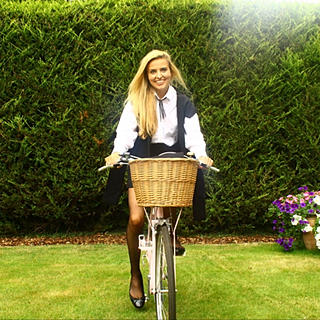The Myasthenic Medic
- Tilly Rose
- Aug 29, 2023
- 3 min read
Updated: Sep 1, 2023

Hi everyone, I’m Zainab and I’m a 20 year old student. More importantly, however, and something you can’t tell from this photo is that, I battle the rare disease generalised Myasthenia Gravis (gMG). This is a rare disease which only affects 15 in every 100,000 people. There is no cure and usually, as was in my case, no known cause. It causes extreme fatigue due to muscle weakness that occurs because the immune system mistakenly attacks and destroys receptors on muscles.
Diagnosis
When I was 15, I started feeling much more tired than usual. I was always known as a bubbly and lively teenager but my family noticed that I wasn’t the same person I usually was; I was falling tired by 11am, my eyelids couldn’t open anymore, and I couldn’t laugh, smile or even talk and eat normally.
When I went to my local GP, optician and A&E department, each multiple times, I was either turned away for being too young for each diagnosis that cropped up, labelled as a lazy teenager, or - in the case of my optician - laughed at. This is despite the fact that my mum, who is a GP, kept mentioning that she thought I had Myasthenia but the diagnosis was always quickly dismissed.
When I received the lifelong, incurable diagnosis of generalised Myasthenia Gravis at age 15, I was - understandably - in denial. I never told anyone except my immediate family about my diagnosis for almost 3 years.
Treatment
I was put on high doses of medication, including steroids, to control my autoimmune condition and the doses kept on increasing because my symptoms were rapidly worsening. But increasing medication meant increasing side effects including weight gain, acne, reduced immunity and much, much more. Furthermore, my symptoms worsened so rapidly that the date for thymectomy operation, that had been organised as part of my management plan, was brought forward. Still, even after the operation, my symptoms showed no sign of improvement and I was commenced on further medication, this time immunosuppressants. As the years went on, I was offered more medications and biological therapies. Each promised hope, but I still haven’t reached remission.
Turning Point
Keeping my diagnosis and its impact private, especially the side effects about which I received unpleasant comments from others, was extremely difficult. However, the photo you see above was the turning point in my rare disease journey. I had entered and won an essay competition ran by the fantastic team at M4RD which kicked off my ambassador role, and you can read my essay in the Orphanet Journal of Rare Diseases here https://rdcu.be/cHSLe . I realised that I had a chance to use my role as both a patient battling gMG and a medical student to raise awareness about what it’s like battling a rare disease to both the public and colleagues at university.
Advocacy
After being more open about my condition, myself and my family realised that there was very little understanding in both the public and medical field about rare diseases. In our own way, we set about trying to combat this with the support of friends, colleagues and lecturers. Within our university, myself and my sister were founders of the rare disease society called RAREAware Glasgow™️, for which I am currently in the role of President with my sister as Vice-President. Alongside our fantastic committee, we’ve managed to raise understanding about rare diseases and their impact amongst both students and staff, in a fun and engaging environment. Within our year group specifically, there is also a greater understanding of Myasthenia, beyond that taught in the medical curriculum, specifically regarding the wider impacts of battling a hidden and incurable neuromuscular condition. You can keep up with the fantastic work of RAREAware Glasgow™️ here https://linktr.ee/rareawareglasgow .
My Message to You
One of the most significant points that I advocate is that you mustn’t judge someone by what you see. Myasthenia, and many other conditions, are hidden conditions. Just because you can’t see it, doesn’t mean it isn’t there, or that it’s “cured”. It doesn’t cost anything to be kind, so always treat others with a little extra kindness!
I hope, after reading my story, you’ll choose to keep up with my rare disease journey by following me on Instagram @themyasthenicmedic







Comments